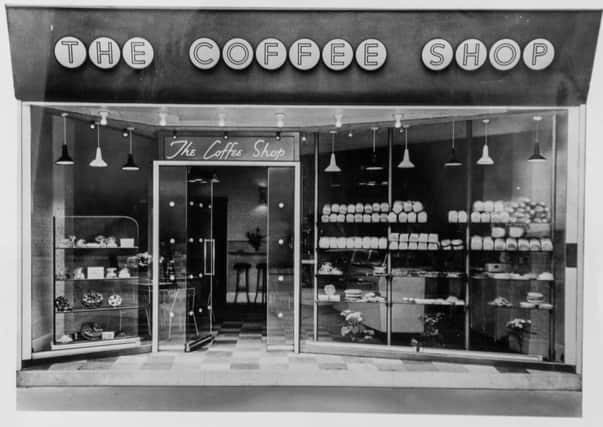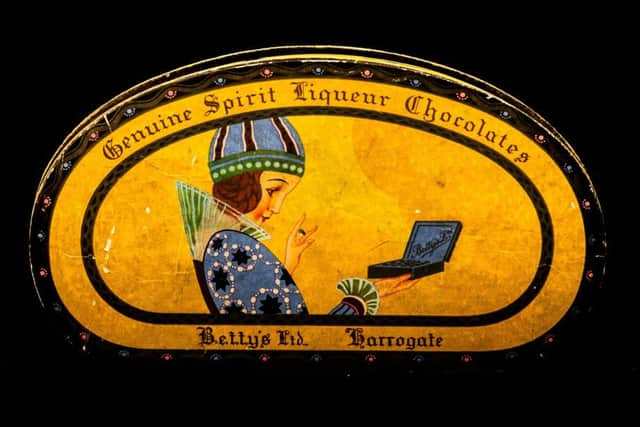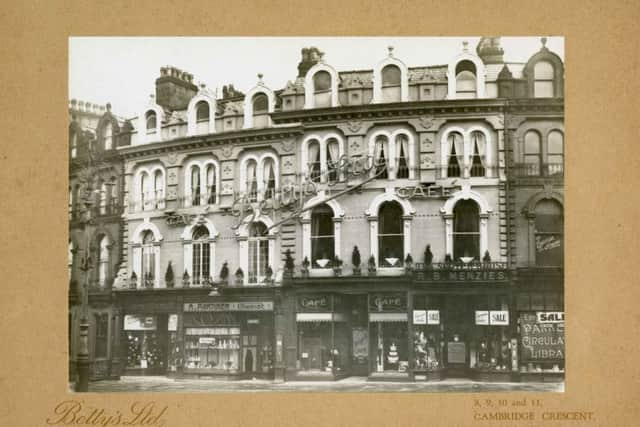100 years of Bettys: How a Swiss baker created one of Yorkshire’s biggest brands


And for the man who started Bettys, which this month celebrates its centenary, it began not here in Yorkshire, but near the Bernese Alps in Switzerland.
Fritz Bützer (he changed his name later to Frederick Belmont) was born in 1885, though tragedy engulfed his young life and by the age of five he’s lost both his parents, leaving him and his older sister, Ida, orphaned.
Advertisement
Hide AdAdvertisement
Hide AdAs was the Swiss custom, he returned to the village of his ancestors where he was fostered to a local farmer. He went to school but spent much of his childhood working as an unpaid farm labourer.


“He had a really hard childhood and from family stories we believe he was bullied at school, on top of everything else he’d been through,” says Mardi Jacobs, archivist project manager at Bettys.
He left the farm when he was just 14 and with help from his step-mother’s family he became an apprentice baker. He soon switched from baking to confectionery, which was better paid and more highly regarded at the time, honing his skills in Marseilles and then Paris before heading to England, where he hoped to make his fortune after being offered a new job.
However, it was happenstance that brought him to Yorkshire. While travelling across the Channel he lost the piece of paper with the address of where he was supposed to go. He couldn’t speak any English at that time and all he could recall was that the place he was heading for sounded like ‘bratwurst’ (German for sausage), at which point a helpful person put him on a train to Bradford.
Advertisement
Hide AdAdvertisement
Hide AdOn his arrival in West Yorkshire he got a job at a Swiss-owned confectioners Bonnet & Sons, and shortly afterwards wrote to his sister back in Switzerland, saying, “Maybe I will stay a while….”


This was in 1907 and 12 years later he’d changed his name to Frederick Belmont, styled himself as a ‘Chocolate Specialist’ and moved to Harrogate.
It was here that the first Bettys, at Cambridge Crescent, opened for business on July 17, 1919.
Starting out just nine months after the end of the First World War might have seemed like a risky move, but the people of Harrogate (and beyond) clearly had a soft spot for his cakes and chocolates and four years later he opened a bakery as the seeds of his culinary dynasty took root, with new cafés in Bradford and Leeds following soon after.
Advertisement
Hide AdAdvertisement
Hide AdA century ago, Bettys sold chocolates, cakes and afternoon tea. “It was the continental style of coffee shop that Frederick had seen in Europe but which was unfamiliar at the time in England, particularly in Yorkshire, and I think that’s one of the reasons why it was so successful. There were Swiss immigrants, like (Cesar) Ritz, that opened hotels in London but outside the capital it was a rarity to find cafés of this style,” says Mardi.


Its uniqueness helped make it stand out from the crowd, as this excerpt from The Yorkshire Post, on December 10, 1926, goes to show. “To Harrogate residents and visitors from far afield “Betty’s” (it was another 60 years before the apostrophe was dropped) is a household word, standing for all that is dainty, comfortable and fashionable in a café”.
Its Tea Rooms boasted ‘royal and distinguished patronage’, tempting customers with lavish window displays and live music from violin virtuosos, adding a touch of the chic and debonair.
In the 1930s, Frederick set his sights on a new goal. During the 19th century, York had become the confectionery capital of Britain, as the home of Terry’s, Rowntree’s and Craven’s, and the Bettys’ boss decided to join them, somewhat brazenly opening premises directly opposite the long-established Terry’s café in St Helen’s Square.
Advertisement
Hide AdAdvertisement
Hide AdWhat some people may be surprised to discover is that during the Second World War, Bettys in York was also famous for something other than tea and cake – namely its bar.
Shortly before war broke out, Frederick opened a cocktail bar on the ground floor and another bar in the basement. It was a smart move as the bar – known as ‘The Dive’ – became popular among servicemen, many of them Canadian bomber crews, stationed at nearby air bases.
In 1942, the café was hit by an incendiary bomb but escaped major damage thanks to the quick actions of an off-duty van driver who was acting as a fire watcher that night. More drama followed a year later, when the army tried to requisition Bettys. They reconsidered after Frederick explained that Bettys was providing 20,000 meals and beverages per week, making a valuable contribution to the war effort. The army quickly withdrew the request.
Throughout the war the cafés remained busy, despite the food shortages. Frederick found himself stretching rations to feed as many people as possible and creating confections out of salvaged goods that would have gone to waste. Gone were the cream-filled fancies and rich chocolates that Bettys had become known for.
Advertisement
Hide AdAdvertisement
Hide AdBettys continued to flourish after the war only to be rocked by Frederick’s sudden death in 1952. His nephew, Victor Wild, took over the helm just as tastes were starting to change.
Victor opened an espresso bar on Street Lane in Leeds. The espresso bar was initially a success, but the staff struggled to cope with the antics of the mods and rockers who frequented it, and it subsequently closed.
Then in 1962 came a landmark moment, thanks to an overheard conversation.
May Carter, the café manager in Harrogate, heard two businessmen talking about C E Taylors & Co – a Yorkshire based café chain and local tea and coffee merchants – being put up for sale. Victor was tipped off and he bought the company, and Bettys became Bettys & Taylors.
Advertisement
Hide AdAdvertisement
Hide AdThis marked a period of experimentation. The decor and signage became more contemporary and it was during this time that Betty’s dropped the apostrophe and became Bettys.
The 1970s signalled another change of direction. In 1971, Bettys Tea Rooms opened in the North Yorkshire market town of Northallerton, and soon after the Tea Rooms in Leeds and Bradford closed, with the emphasis on towns, rather than cities.
The story of Bettys is a remarkable one, though it hasn’t always been plain sailing, as Mardi points out. “There’s been challenging times over the last hundred years. For Frederick to even open Bettys the year after the First World War ended wasn’t easy, especially for someone who was Swiss. The Second World War was a difficult time, too, because a lot of businesses didn’t survive,” she says.
Just as there have been changes to the style and decor of Bettys over the years, the same goes for the food. “We still serve small and dainty dishes, we made macaroons and served afternoon tea back in the 1920s and we’re still making them today, but the style and flavour is just a bit different.”
Advertisement
Hide AdAdvertisement
Hide AdFrederick Belmont was in many ways ahead of his time, his continental-style cafes can be seen as a precursor of today’s coffee shops, while the mail order service he established in the 1920s has evolved into an online business sending treats to customers as far away as Hong Kong and Australia.
Today, a century after Frederick opened the door at Bettys for the very first time, people still flock to its cafes in their droves.
So what is its enduring appeal? It’s a question Mardi often gets asked. “I think it’s the combination of what Frederick first created. It’s still about the atmosphere, the service and, of course, the exquisite food… It remains a treat to go to Bettys.”